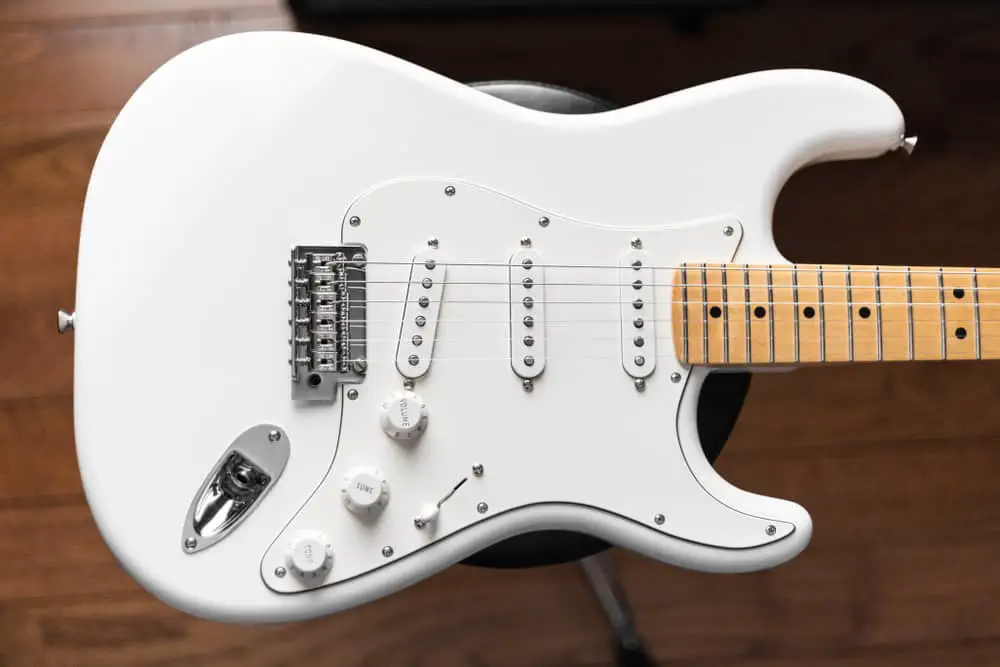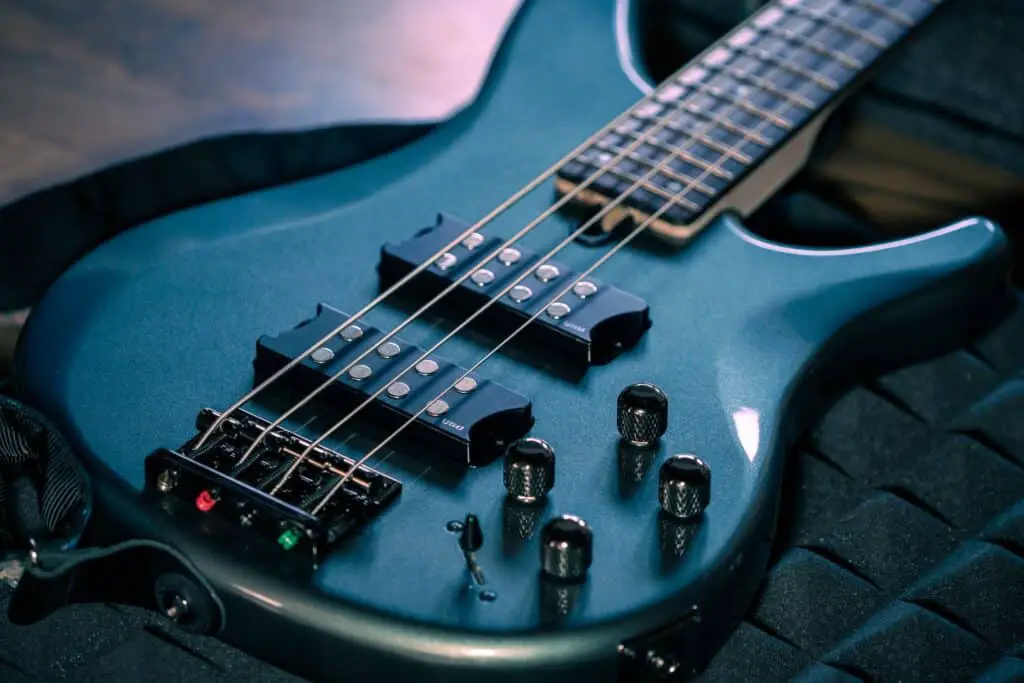
There are several reasons that determine how long the neck of a guitar can be. Guitarists can be very particular about their instruments and want them to feel as personal as possible.
The length of a guitar neck can determine its sound, feel, and comfortability. For many people, this certainly begs the question of how long is a guitar neck.
The average neck scale length on guitars is between 24 and 25.5 inches. However, acoustic, electric, and bass-guitar neck lengths vary based on the type of guitar. The guitar neck length refers to the distance between the bridge and the guitar’s nut.
Brands have their unique measurements for different types of guitars. Every detail is an essential factor in getting the right instrument.
In this article, we will highlight the different lengths of a guitar neck, how it affects the sound and the differences between a short and long-scale guitar neck.
The Different Types Of Guitars And Their Lengths
Most professional guitarists need to check every detail when searching for a new guitar. Acoustic, bass, and electric guitars have specific guitar neck lengths unique to their sound and brands.
Electric Guitar

For electric guitar, it is necessary to consider the length of the neck because it would help in tuning.
Electric guitars have devices called pickups, and these they used to convert the strings’ vibration into an electric signal. The signal is sent to an amplifier by the pickups, which converts it into sound.
Here are the usual sizes of guitar necks based on brands and models.
| Brand | Sizes (Inches) |
|---|---|
| Gibson Les Paul | 24.75 |
| Fender Jaguar/Mustang | 24 |
| Ibanez Artcore | 24.7 |
| Stratocaster | 25.5 |
| D’Agelico | 25 |
| PRS McCarty 594 | 24.594 |
| PRS 245 | 24.5 |
These and many more are the different sizes of an electric guitar neck based on brands. Some guitar neck sizes can even go as high as 29.75, like the Gretsch.
Acoustic Guitar

With this guitar, the average guitar neck length is usually between 24 – 25.5 inches, regardless of the brand. They have shorter guitar necks because they don’t transfer vibrations and other guitars.
The vibrating string length is more concise, making it better when played in lower positions on the neck. The body of an acoustic guitar is larger than the electric guitar.
The acoustic guitar’s body, shape, size, and material majorly influence the sound and projection of the guitar. This function makes it a delicate process in its manufacturing procedure.
Since acoustic guitars generally are known for their projection and resonance, the large sounding board attached helps vibration and air in the internal parts of the guitar.
Bass Guitar

The standard length of a bass guitar neck is between 30 to 36 inches. The brands determine the exact size of the guitar neck.
They have a longer neck compared to other guitars because the length is necessary to induce the deep pitch it projects.
The guitar strings attached are long and heavy to release the needed vibration.
Differences Between Short & Long Guitar Neck

The guitar neck length has a significant impact on the tone and comfortability. The guitar neck length can affect the sound, comfortability, and even suitability of the music you are trying to compose or play.
Here are some of the differences between long and short guitar necks;
Sound
The tone from a longer guitar neck is usually warm and light. The longer guitar neck is more versatile than shorter guitar necks.
The short guitar neck projects a fuller tone due to the lower amount of tension which allows the string to vibrate freely.
Comfortability
Short-scale guitar necks are usually 24 inches or less, and long-scale ones are 25 inches or more.
The short-scale guitar neck is relatively easier to play because it requires less tension, unlike the long-scale guitar neck, which requires more pressure on the strings, making it tougher to play.
Frets
Frets refer to the metal strips that are laid on the board. If you have shorter fingers, the short-scale guitar neck would be better for you.
The fret spacing on shorter lengths is closer, which would be more comfortable to play, but if you have thicker and longer fingers, the long-scale guitar neck would be preferable due to more space between the frets.
Flexibility
It is easier to perform techniques on a shorter guitar neck when compared to a longer guitar neck. With the longer guitar neck, the guitar can produce low notes when desired.
The low notes come from the thick strings that travel through a longer distance to make lower frequencies, especially in bass guitars.
Versatility
Both guitar necks are suitable for different techniques. When it comes to chording and chopping, shorter guitar necks are generally preferred.
In shredding, longer ones are preferable, as you will have enough space to develop a style and flair of your own.
Conclusion
Guitar neck lengths affect the sound and overall ability of the guitar. You have to understand what you want, so you know the length to choose.
You don’t want to hate your guitar because it is not the right size or it doesn’t produce the sound you want. Hence, you understand the different types of guitars, their neck length, and the kind of music you would love to play.
Jazz music goes well with acoustic guitars and short-scale guitar necks, while rock music is great on electric guitars. The guitar neck works with the strings of a guitar to produce the desired sound.
Guitar neck length is a detail that you should not overlook.
Frequently Asked Questions
It is where the harmonics and overtones sit on a string. This means that with a longer scale, there is room for it to breathe, thereby producing a clearer tone.
This refers to the measurement of the arc of the fingerboard across the width.









